As the name suggests, photobiomodulation therapy involves exposing your body to light to help boost your overall health and wellness. The light activates cellular repair mechanisms to help your body improve its function and recover from stress-inflicted damage. Many studies have shown promising results for red light therapy, with some studies suggesting significant effects on blood flow and blood pressure levels. The mechanism behind red light therapy involves a sequence of effector molecules, transcription factors, signaling molecules, and channels in the relative molecular or tissue pathways. In this blog we will disclose the most important biological actions of the primary applications of red LED light therapy.
How does red light therapy work?
LLLT red light therapy is the application of light, commonly using a low power laser or LED (10mW - 500 mW). Because these wavelengths can permeate the skin and soft or hard tissues and have been shown in clinical trials to have a positive impact on pain, inflammation, and tissue regeneration, light with a wavelength in the red to near infrared part of the spectrum (660 nm - 905 nm) is typically used.

According to the first law of photobiology, a photon must be absorbed by electronic absorption bands that belong to a photon acceptor or chromophore in order for low-power visible or near infrared light therapy to affect a biological system. A chromophore is a molecule (or subunit of a molecule) that gives a substance color, such as porphyrins, cytochrome c oxidase, hemoglobin, myoglobin, flavin, or chlorophyll. The term "optical window" in a tissue refers to a range of wavelengths where red and near infrared wavelengths are used to maximize the penetration of light into the tissue. The ideal wavelength is thought to be around 810 nm. Our cells' mitochondria, sometimes known as "the cellular power plants," use oxidative phosphorylation to turn food molecules and oxygen into energy (ATP). It has been suggested that the main photoreceptor for the red NIR light therapy in human cells is cytochrome c oxidase (COX).

Low level red light therapy can cause a change in the overall redox potential of the cell, the redox shift, by raising reactive oxygen species and lowering reactive nitrogen species. This property of changing redox states can favor greater oxidation. The immediate chemical signaling molecules produced from the induced mitochondrial stimulation of low level LED light therapy are thought to be the cause of the LLLT's long-term effects because they activate a number of transcription factors. Other thought-to-be the most significant signaling molecules are ATP, cyclic-AMP, NO, ROS, and more.
Red light therapy is used to treat a variety of conditions, including depression, pain, and insomnia. The light waves in red light are shorter than those in other colors, which makes them more effective at penetrating the skin and reaching the targeted area. The light also stimulates the production of natural chemicals that help to heal the skin. Red light therapy has been shown to improve symptoms of acne, psoriasis, and varicose veins.

The activation of transcription factors behind RLT light therapy
Nuclear factor kappa B (NFκB), as one of the most important transcription factors in human cells, controls the expression of several genes involved in a wide range of cellular processes, including survival, inflammation, and stress-induced responses. ROS is able to modulate the NFκB activity directly or in an indirect activation via TNF, interleukin-1 (IL-a), and phorbol esters, while PBM light therapy may increase the production of ROS, and it is demonstrated that medical LED light therapy has a function on activating NFκB. The enhanced gene transcription caused by the increased NFκB production in response to PBM red light therapy results in decreased cell mortality, raised cell proliferation, increased cell migration, and improved neurological survival, as found in this study.
RANKL is a transmembrane protein belonging to the TNF superfamily, called receptor activator of nuclear factor kappa B ligand (RANKL), and involved in bone remodeling and regeneration (acting on osteoclast differentiation and activation). Additionally, another ligand called osteoprotegerin ligand (OPG) is also involved in the remodeling process of bone. If the bone is destroyed or produced during remodeling depends on the RANKL/OPG ratio.
In this clinic case of studying the action of red laser therapy on the RANKL/OPG ratio, for all of the studied dosages, there was a tendency for a quick and brief rise in the RANKL/OPG ratio. Since there is evidence of a rise in the ratio of human alveolar bone-derived cells after red light laser therapy at 780 nm whereas the results were the reverse in rat calvarial cells exposed to 650 nm light, which appears that this ratio after red light therapy photobiomodulation varies on the tissue types and the applied parameters.
Hypoxia inducible factor, alternatively known as HIF-1, is a protein that helps cells adapt to hypoxia. It is stable at low oxygen tensions, but in the presence of increased oxygen concentrations, it is quickly destroyed by oxygen-dependent prolyl hydroxylase enzymes. HIF-1 stimulates the expression of genes involved in the cellular response to hypoxia, including vascular endothelial growth factor (VEGF), VEGF-receptor, glucose carrier (GLUT-1) and phosphoglycerate kinase (PGK). Though there are several different explanations for how red LED and infrared light therapy affect HIF-1 activity, there is evidence observed. In this study, it was observed that only 660 nm light was able to increase HIF-1α expression, and while all light dosages could produce VEGF, only applying 40 J/cm^2 dosage could induce angiogenesis and increase MMP-2 activity.
Akt/GSK3β/β-catenin signaling pathway Low-level LED light therapy may promote cell viability by activating the AKT/GSK3β/β-catenin pathway. Basically, LLL irradiation activates protein kinase B (also known as AKT), which subsequently interacts with glycogen synthase kinase 3β (GSK3β), destroying its function. GSK3β is a serine-threoninekinase that joins many cellular signaling pathways, regulates metabolism, affects embryogenesis, and has a role in cell death and oncogenesis.
The tissue mechanisms of photonic therapy for human
Red light therapy is a form of photonic therapy that uses red light to treat various medical conditions. Red light therapy has been used in clinical settings for more than two decades now. The mechanism of red light therapy involves the use of photons to stimulate cells and improve the function of tissues. In this way, red light therapy can help treat a variety of medical conditions such as inflammation, wound healing, and cancer treatment.

Bestqool: best at home red light therapy near me
Red light therapy devices are used to emit effective red light wavelengths with clinical standards of irradiance and other optics. When used correctly, red light therapy can be effective in treating various medical conditions such as depression, inflammation, pain, acne, and inflammation. However, it is important to follow the instructions provided by the device's manufacturer to ensure optimal results. Choosing true medical LED red light therapy devices is undoubtedly important for desired therapeutic effects. That Bestqool is credited as the best option is not out of thin air but from the following reasons:
- Long involvement in innovative LED production technology.
One thing that must be addressed is that not every basic LED panel has a therapeutic effect, and what hinders the process of developing LED light therapy before the success of the NASA experiment is the technology to adjust the range of emitting wavelengths. LED manufacture is far more complicated than you may think. Only a sufficiently narrow spectrum of therapeutic wavelengths with target specificity can produce the desired results. Based on several clinical experiments, Bestqool LED photon light therapy devices are able to focus on the most suggestive and effective wavelengths within the narrow band (red light at 660 nm and near-infrared light at 830 nm).
The irradiance levels and dispersion pattern of LED light therapy devices are also important for red light therapy effectiveness. Numerous investigations have revealed that the linear reciprocity of irradiance output and the cumulative beneficial impact can only be found between 1 and 100 mW/cm2. Even if the treatment duration is extended, irradiance levels outside of this range are unlikely to provide therapeutic results. Bestqool devices can provide irradiance levels sufficient to achieve medical-grade and optimum therapeutic benefits. Using Bestqool gadgets for 10 minutes is equivalent to using others for 20 minutes.
- Research in the medical device field
All Bestqool products, as FDA approved red light therapy, assure the efficacy and safety of therapy. The research in this medical sector assists Bestqool in producing more professional red light treatment equipment. Bestqool is dedicated to producing devices that are more adaptable for human biological structures. As described in this scientific study, the intolerable heating of human tissues is in fact wavelength-dependent, and the dispersion pattern of LED light beam profiles may also considerably impact the actual energy dosage of cells at the periphery or center areas of light beams.
- The market's longest warranty
To assure the best red light therapy at home, all Bestqool devices come with a three-year warranty, which is presently the longest on the market. Bestqool places great importance on customer and patient happiness and strives to improve your health.



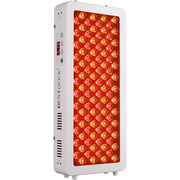








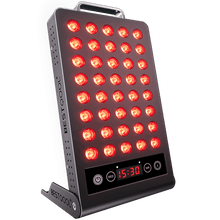
 Small
Small
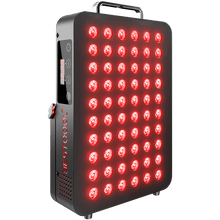
 Moderate
Moderate
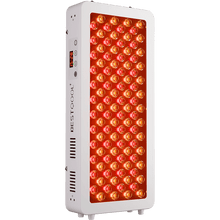
 Moderate
Moderate
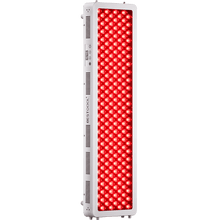
 Moderate
Moderate
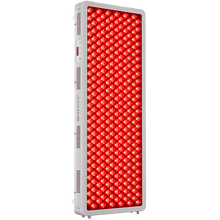
 Full
Full



